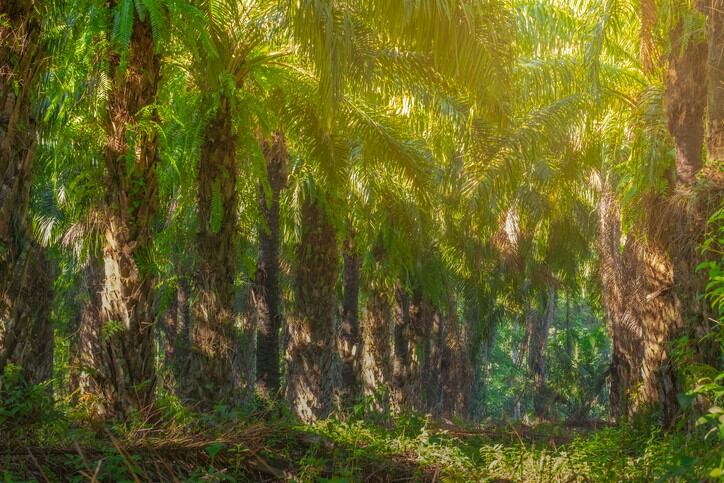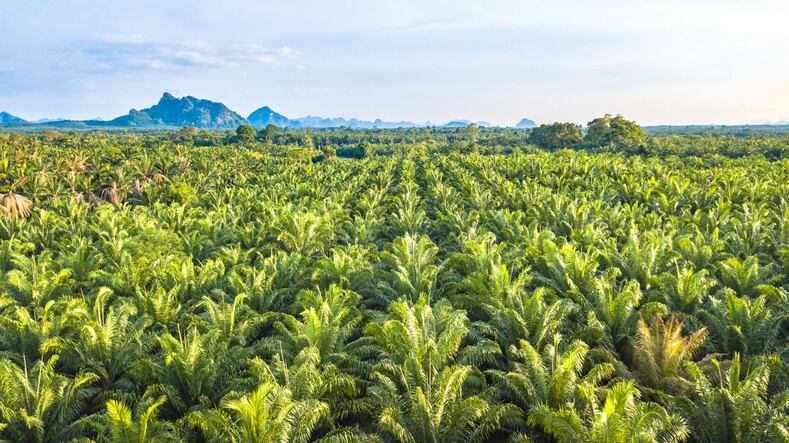While palm oil is one of the most used vegetable oils in processed food, it is associated with deforestation and habitat loss in producer countries, particularly Southeast Asia.
“Oil palm is blamed for its large environmental impacts, especially the reduction of carbon stocks and biodiversity from tropical forest conversion, so the search for low-impact land-use change alternatives has become imperative,” write the team of international researchers from the École Polytechnique Fédérale in Lausanne, Switzerland and the Pontificia University of Javeriana in Bogota, Colombia.
Their study is the first to look at the carbon footprint of palm oil production over two plantation cycles covering 56 years, which meant they could calculate the benefit of using available pastureland instead of native savannas and natural forests in Colombia, the world’s fourth-largest palm oil producer.
“This study provides empirical field-based evidence that the conversion of pastures to oil carbon is carbon neutral from an ecosystem carbon storage perspective," they conclude.
'An opportunity to reduce palm oil's large carbon footprint'
The researchers found that ecosystem carbon storage on pasture-to-palm plantations in Colombian savanna regions remained unchanged after 56 years. Compared to rainforest conversion, this alternative land-use change reduces net ecosystem carbon losses by 99.7%.
“Our findings indicate that conversion of pastures to oil palm can be an opportunity to preserve and even increase carbon sequestration in the tropics and reduce the large carbon footprint of oil palm development on forested land,” add the researchers.
Planting palm oil plantations on deforested land can never replace the amount of carbon originally sequestered or make up for the lost biodiversity. However, dense populations of oil palm trees can increase the carbon capture rate per unit of surface area on neglected and degraded pastureland, thanks to the biomass of palm tree roots, trunks, leaves and the vegetation in between each palm tree.
Additionally, on typical palm oil plantations, oil palms are cut down every 25 to 30 years and replaced with young palms to begin a new cycle. As the roots of the old trees decompose, they add nutrients back into the soil, increasing the soil quality and partially offsetting the carbon initially lost in the upper soil layer when the pastureland was converted.
The scientists estimated the amount of biomass-stored carbon on a densely populated palm plantation is around five times greater than on pasture.
This means that, in the long-term, the amount of carbon stored in the ecosystem remains unchanged when compared to the initial levels before land conversion from pasture to plantation took place, according to the researchers, resulting in a palm oil crop that is almost completely carbon neutral.
'Many producer countries have large, abandoned pastures'
Alexandre Buttler, head of ECOS and co-author of the study, said: "The problem lies with the negative carbon impact and loss of biodiversity caused by deforestation. But the main palm oil-producing countries have large, abandoned pastures that could be converted favorably, thus limiting the massive carbon loss resulting from deforestation."
The researchers conducted the study in La Cabaña, a large-scale commercial palm oil plantation, and three surrounding cattle ranch farms located in the Llanos region, which makes up around one quarter (22 million hectares) of Colombia’s national territory.
According to the scientist, the Llanos region is characterized by its savanna and forest ecosystem. However, over the past few decades it has been radically transformed with vast areas of native land cleared and sown with Brachiaria, a type of grass native to Africa used for cattle pasture.
“[The Llanos] is often regarded as one of the last frontiers for agricultural expansion in South America,” write the researchers.
Source: Science Advances
“Carbon neutral expansion of oil palm plantations in the Neotropics”
Available online ahead of print, DOI: 10.1126/sciadv.aaw4418
Authors: J.C. Quezada, A. Etter, J. Ghazoul et al.




